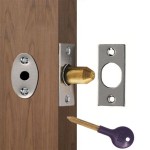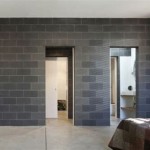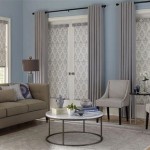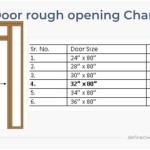How Much To Paint Interior Walls Per Square Foot: A Comprehensive Guide
Determining the cost of painting interior walls involves a complex interplay of factors. Understanding these factors and how they contribute to the overall expense is crucial for effective budgeting and project planning. This article examines the components influencing the cost per square foot for interior wall painting, providing a detailed overview for homeowners and project managers.
The price of painting interior walls is typically calculated on a per-square-foot basis. This involves measuring the total surface area to be painted and applying a specific rate for labor and materials. However, the "per square foot" rate is not a static figure. It fluctuates based on several key variables, influencing the final project cost significantly.
Factors Affecting the Cost Per Square Foot
Several key factors contribute to the fluctuating cost per square foot of interior wall painting. These include the condition of the walls, the type of paint used, the labor costs in the region, the complexity of the job, and the necessary preparation work.
Wall Condition: The state of the wall surface plays a critical role in determining the cost. Walls with extensive damage, such as cracks, holes, or water stains, require significant preparation before painting. This preparation may include patching, sanding, and priming, all of which add to the labor hours and material costs. Smooth, well-maintained walls require less preparation, resulting in a lower per-square-foot rate.
Walls with existing wallpaper or textured coatings will require removal, adding a considerable expense to the project. Wallpaper removal can be time-consuming and labor-intensive, potentially requiring specialized tools and techniques. Similarly, removing textured coatings can involve sanding or other methods to create a smooth, paintable surface.
Walls that have been previously painted with dark colors may require multiple coats of primer and paint to achieve full coverage with a lighter color. This increased material usage and labor contribute to the higher per-square-foot cost.
Type of Paint: The type of paint selected influences the material cost. Paints vary widely in price, depending on their quality, durability, finish, and special properties. High-quality paints generally offer better coverage, durability, and resistance to wear and tear, but they also come with a higher price tag. Low-quality paints might be cheaper upfront, but they may require more coats, leading to increased labor and overall cost.
Different paint finishes, such as matte, eggshell, satin, semi-gloss, and gloss, also affect the price. High-gloss paints are typically more expensive than matte paints due to their enhanced durability and sheen. Specialty paints, such as those with mold resistance, low VOC (volatile organic compounds), or antimicrobial properties, carry a premium price.
The desired color also can also impact the cost. Certain pigments, particularly those used to create vibrant or deep colors, tend to be more expensive. This is especially true if the paint needs to be custom-mixed to achieve a specific shade.
Labor Costs: Labor costs are a substantial component of the overall painting expense. Labor rates vary significantly depending on the geographic location, the experience and qualifications of the painters, and the demand for painting services in the area. Areas with a higher cost of living typically have higher labor rates.
Highly skilled and experienced painters may charge more per hour than less experienced painters. However, their expertise can result in a higher quality finish and more efficient work, potentially saving time and money in the long run. Licensed and insured painters offer added protection and peace of mind, but their services usually come at a higher price.
The complexity of the job also impacts labor costs. Intricate trim work, detailed designs, or painting in hard-to-reach areas require more time and skill, leading to higher labor charges. Projects requiring multiple painters or specialized equipment will likewise increase the overall labor expense.
Complexity of the Job: The complexity of the painting project influences the per-square-foot cost. Painting a simple, rectangular room with minimal trim and no obstacles is less complex and less expensive than painting a room with intricate architectural details, built-in shelving, or numerous windows and doors.
Painting multi-story homes or rooms with high ceilings may require the use of scaffolding or ladders, adding to the time and labor involved. Similarly, painting rooms with unusual shapes or angles can be more challenging and require specialized techniques, increasing the overall cost.
The presence of furniture and other belongings in the room also adds to the complexity of the job. Painters must carefully protect these items from paint splatters and drips, which can be time-consuming. Moving furniture out of the room prior to painting can help to minimize these costs.
Preparation Work: Adequate preparation is crucial for a successful paint job and can significantly impact the overall cost. This includes cleaning the walls, patching holes and cracks, sanding rough surfaces, and applying primer. Skipping or skimping on preparation can result in a poor finish and may require repainting, ultimately costing more in the long run.
Cleaning the walls removes dirt, dust, and grease, ensuring that the paint adheres properly. Patching holes and cracks creates a smooth, even surface for painting. Sanding smooths out imperfections and removes any loose paint or texture. Priming seals the surface, improves paint adhesion, and prevents stains from bleeding through.
The amount of preparation work required will depend on the condition of the walls. Severely damaged walls may require extensive patching, sanding, and priming, while well-maintained walls may only need a light cleaning and priming.
Estimating the Cost: A Practical Approach
To estimate the cost of painting interior walls, individuals should first determine the total square footage of the walls to be painted. This is calculated by measuring the length and height of each wall and multiplying the two dimensions. The measurements for all walls in the room should then be added to obtain the total square footage.
Next, research the average per-square-foot painting costs in the local area. Online resources, such as home improvement websites and contractor directories, can provide ballpark figures. However, it's essential to obtain quotes from multiple local painters to get a more accurate estimate.
When requesting quotes, provide painters with as much detail as possible about the project, including the condition of the walls, the type of paint desired, and any specific requirements. This will enable them to provide a more accurate and comprehensive estimate.
Examine the breakdown of the quotes carefully, paying attention to the cost of labor, materials, and preparation work. Ensure that all aspects of the project are included in the estimate to avoid any surprises later on.
Bear in mind that the lowest quote is not always the best option. Consider the painter’s experience, qualifications, insurance coverage, and customer reviews when making a decision. Paying a slightly higher price for a reputable and reliable painter can result in a better quality finish and a more positive overall experience.
Additional Cost Considerations
Beyond the base per-square-foot rate, several additional costs can influence the final project expense. These include the cost of moving or covering furniture, the cost of repairing or replacing damaged trim, and the cost of disposing of old paint and materials.
Homeowners can save money by moving furniture out of the room themselves or covering it with drop cloths. However, if they prefer the painters to handle this task, it will add to the overall cost.
Damaged trim, such as baseboards, crown molding, or window casings, may need to be repaired or replaced before painting. This can add to the material and labor costs. If the trim is painted a different color than the walls, this will also increase the labor costs, as it requires more precise painting techniques.
Proper disposal of old paint cans and other painting materials is essential to protect the environment. Many municipalities have regulations governing the disposal of these materials, and homeowners may need to pay a fee to dispose of them properly. Some painters include disposal fees in their estimates, while others may charge them separately.
Unexpected problems can sometimes arise during a painting project, such as hidden wall damage or unforeseen complications. It is prudent to set aside a contingency fund to cover these unexpected expenses.
In conclusion, calculating the cost of painting interior walls per square foot requires careful consideration of various factors, including wall condition, paint type, labor costs, job complexity, and preparation work. By understanding these factors and obtaining detailed quotes from multiple painters, individuals can effectively budget for their painting projects and ensure a satisfactory outcome. By accounting for additional costs and potential unexpected issues and creating a financial contingency, homeowners can avoid stressful additional expenses that were not budgeted for.

How Much Does It Cost To Paint The Interior Of A House In Paintrite Pros

How Much Does It Cost To Paint The Interior Of A House In Paintrite Pros
The Cost To Paint Interior Of A House Touch Color

Painting Cost Per Square Foot In 2024 Keyvendors

Cost To Paint Home Interior House Painting For

Cost To Paint The Interior Of A House In 2024 Trico Painting

Cost To Paint A House Whole Painting Fixr

How Much Does Interior House Painting Cost A New Leaf

Interior Painting Costs Per Square Foot Home Painters Toronto

4 Ways To Calculate Per Square Foot For House Painting
Related Posts








